Oilab maintains unparalleled depth and breadth of expertise across a range of oceanographic research areas. Institution scientists and engineers work collaboratively within and across six research departments to advance knowledge of the global ocean and its fundamental importance to other planetary systems. At the same time, they also train future generations of ocean scientists and address problems that have a direct impact in efforts to understand and manage critical marine resources.
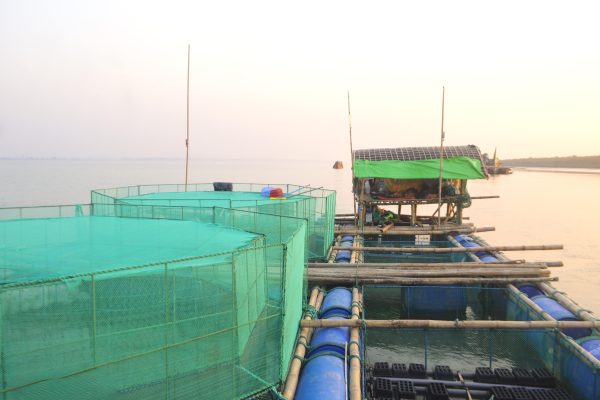
OILAB is a pioneer in making innovations for marine aquaculture development in Bangladesh. OILAB members have practical experiences for over 20 years to deal with marine fish, shrimp, crabs, molluscs, and seaweed aquaculture in captivity and open seas.
OILAB is a pioneer in making innovations for marine aquaculture development in Bangladesh. OILAB members have practical experiences for over 20 years to deal with marine fish, shrimp, crabs, molluscs, and seaweed aquaculture in captivity and open seas. OILAB uses the state of art knowledge for indoor, outdoor and open seas mariculture technologies including recirculating aquaculture (RAS), flow-through, raceway and marine cage systems. OILAB has successfully introduced an integrated multi-trophic aquaculture (IMTA) system for the first time in Bangladesh coastal waters. At present, OILAB has designed a project for the integrated production of aquaculture species of different trophic levels under a circular economy approach, minimizing energy losses and environmental deterioration. In this project, sustainable aquaculture concept is followed focusing both onshore and offshore coastal waters. Where community based multiple configurations of multi-trophic aquaculture systems: (1) onshore indoor and outdoor integrated multi-trophic aquaculture (Indoor and outdoor IMTAs) and (2) offshore floating integrated multi-trophic aquaculture (floating IMTA), along with (3) marine cage production system (MCPS) are going to be developed and tested with the simultaneous production of vertebrate (i.e. seabass, seabream, mullets) and invertebrate species (i.e. shrimp, carb, mussel, oyster, polychetes) and algae (i.e. seaweed and micro-algae) in the south-eastern coast of Bangladesh. This project is novel in nature that will deal the conventional (seabass, mullets, seabream, crab, shrimp) and non-conventional (goby, mussel, oysters, seaweeds, polychaete) marine fisheries items to develop their production systems and can fit for many coastal regions in Bangladesh. Moreover, OiLAB has set new focuses on migratory ‘Hilsha’ fish, which is a flagship species for revenue earnings to Bangladesh. To reduce the pressure on wild catches, OiLAB is going to put deliberate efforts to have a breakthrough in technological innovation for Hilsha aquaculture in captivity.
The Ganges-Brahmaputra-Meghna (GBM) Delta provides a diversity of ecosystem services that attract and support a large local population in Bangladesh. Many parts of the GBM delta are still active and continuously shaping the coastal geo-morphology due to sediment transports through the GBM river systems.
The Ganges-Brahmaputra-Meghna (GBM) Delta provides a diversity of ecosystem services that attract and support a large local population in Bangladesh. Many parts of the GBM delta are still active and continuously shaping the coastal geo-morphology due to sediment transports through the GBM river systems. OILAB is focusing to monitor the coastal geo-morphological changes as a result of flow dynamics and sediment transport or flux along the Bangladesh coasts through field and satellite observations. Moreover, this lab is pioneer in developing natured based solutions to prevent coastal erosions in Bangladesh. Our lab has developed eco-engineering technologies using coastal habitats (e.g., oysters, saltmarsh, and mangrove) for reducing coastal erosion by trapping sediments and changing hydro-dynamic nature (i.e. waves and currents) of the coastal sites. These technologies are successfully piloted in erosion prone multiple islands, located in the south-eastern coast of Bangladesh.
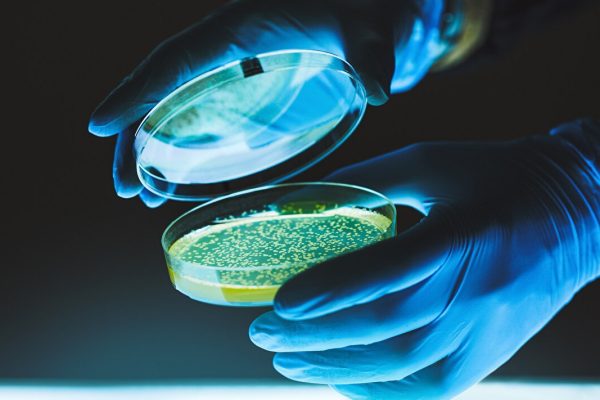
OILAB has initiated some innovative research programs in the field of: (1) artificial propagation of marine fish and shellfish; (2) marine natural product chemistry; (3) marine micro-biome; and (4) bio-remediation using various biotechnological approaches.
OILAB has initiated some innovative research programs in the field of: (1) artificial propagation of marine fish and shellfish; (2) marine natural product chemistry; (3) marine micro-biome; and (4) bio-remediation using various biotechnological approaches. Currently, OiLAB is investigating to develop the breeding technologies for marine gobies using hypophysation techniques in captive conditions. Additionally, the lab is conducting exploratory field programs for identifying marine sponge habitats, which are productive sources of bioactive secondary metabolites. OiLAB is collaborating with Bangladesh Council of Scientific and Industrial Research (BCSIR) to assess the potential bioactive secondary metabolites from marine sponges for potential medical applications. OiLAB in association with the Department of Genetic Engineering and Biotechnology (CU) are also addressing the microbial community structure in marine sponges using metagenomics for understanding their roles in ecosystem services and production of secondary metabolites. Moreover, OILAB has been investigating the composition and structure of coastal microbial communities from the ship breaking and recycling sites, located along the south-eastern coast of Bangladesh, which are known as excessive polluted sites. This investigation is the first of its kind from the ship breaking areas of Bangladesh that are exploring novel micorobiota, novel biosynthetic and secondary metabolite production gene clusters, antibiotic producing strains, and enzymes of industrial importance using molecular tools and techniques. OILAB is exploring the natural nutrient cyclers and harsh-living prokaryotic species with possible biotechnology and pharmaceutical applications.
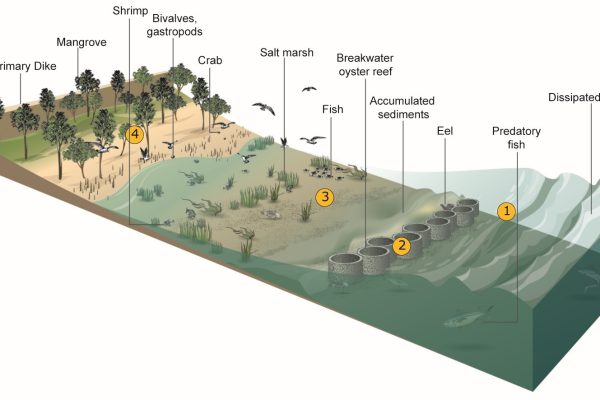
OILAB has keen interests on: (1) microplastic pollution; (2) heavy metal pollution; and (3) area based management (e.g. MPAs, ECAs, and Marine Reserves) of critical coastal and marine habitats.
OILAB has keen interests on: (1) microplastic pollution; (2) heavy metal pollution; and (3) area based management (e.g. MPAs, ECAs, and Marine Reserves) of critical coastal and marine habitats. This lab has been contributing to measure the microplastics ingestion or contamination rates in a wide range of marine organisms from different trophic levels in the Northern Bay of Bengal. OILAB has designed a new monitoring program to investigate the present state of micro-plastic pollution in seawater, bottom sediments and biota including bio-physical factors that determine their spatial distribution and domino effect in marine food webs. OILAB has been analyzing water, sediment and biotic samples taken from ship breaking and recycling yards, located in the Chittagong coastal areas for investigating heavy metal pollution and their bioaccumulation and biomagnification to surrounding biota including microbes. OILAB has been implementing various researches in Marine Protected Areas (MPAs) and Ecologically Critical Areas (ECAs) for creating scientific knowledge to support the Bangladesh government in its decision-making process for formulating appropriate conservation and management strategies to conserve and restore the critical habitats (e.g. corals, seagrass, sand dunes, turtle, dolphins and other marine mammals). This lab encourages co-management approaches and provides necessary guidelines for functional zoning through seascape or marine spatial plan (MSP) plan with practical demonstrations for sustainable use of coastal and marine resources.

OILAB has been conducting various researches focusing the changes in ecological settings for: (1) hermatypic and ahermatypic corals; (2) saltmarsh; (3) seagrass; (4) mangrove; and (5) benthic ecosystems, located in the northern Bay of Bengal.
OILAB has been conducting various researches focusing the changes in ecological settings for: (1) hermatypic and ahermatypic corals; (2) saltmarsh; (3) seagrass; (4) mangrove; and (5) benthic ecosystems, located in the northern Bay of Bengal. OILAB has launched a series of habitat monitoring programs in the offshore St. Martin’s Island, which is surrounded by a sedimentary rocky reef and has been colonized by hermatypic and ahermatypic corals, and calcareous algae. The lab is also monitoring the saltmarsh and critical seagrass habitats in central and south-eastern coasts for understanding their ecological roles and interactions among their associated species. The lab successfully conducted field research to reveal the environmental functions of the mangroves in south-east coasts that communicate the values of goods and services. The lab has an extensive monitoring program for the mighty Sundarbans, which is the largest mangrove forest in the World and enlisted as UNESCO World Heritage Sites. Recently the lab has completed a research cruise program in the Sundarbans mangrove forest for season 2023-24 that covered over 250 km of waterways and 30 monitoring stations. This research is going to address the changes in aquatic and terrestrial habitats due to climate change and man-made pressures around the Sundarbans areas along with their effects on faunal and floral biodiversity.
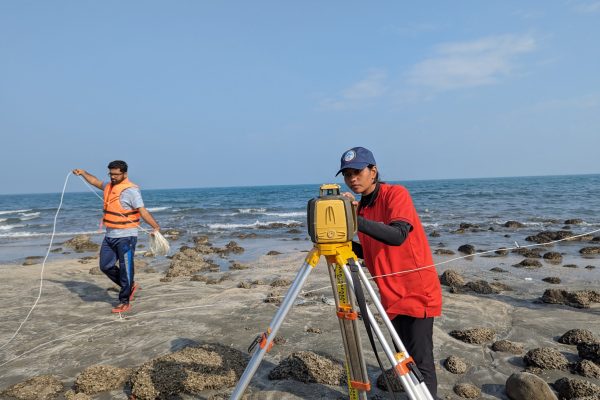
OILAB is making efforts on answering how coastlines and land-use patterns are changing along the Bangladesh coasts and how it is affecting the communities living at the land’s edge.
OILAB is making efforts on answering how coastlines and land-use patterns are changing along the Bangladesh coasts and how it is affecting the communities living at the land’s edge. The lab is using a combination of field data, environmental data, and remote sensing observations to understand the coastal landscape both on land and under the sea changes due to natural events and human modifications. The Lab is focusing to make sense of the observable changes in shape of the coast lines and land use patterns for islands (i.e. Moheshkhali, Kutubdia, St. Martin’s Islands) located in the south-eastern coast of Bangladesh. The lab is collaborating with the scientists from WHOI to measure sea surface temperature and ocean pH changes in the northern Bay of Bengal by using satellite technology, state-of-the-art sensors, and cloud computing. The lab has planned to install Coastal and Ocean Observation System (COOS) in the offshore St. Martin’s Island and estuarine Moheshkhali Channel that will provide environmental data to validate various hydro-dynamic models, developed by the OILAB. The lab has developed multiple ocean models to simulate oceanic bio-physical environments under a given scenario using ROMS, Delft-3D and SWAN approaches. Moreover, OILAB has planned to contribute to global discovery in deep sea benthic observations from Bay of Bengal regions. OILAB members are receiving training as ROV pilots who can maintain and control remotely operated vehicles (ROVs). OILAB has initiated a special under water monitoring program in the St. Martin’s MPA since 2023 with the technical assistance from Canadian research partners.
